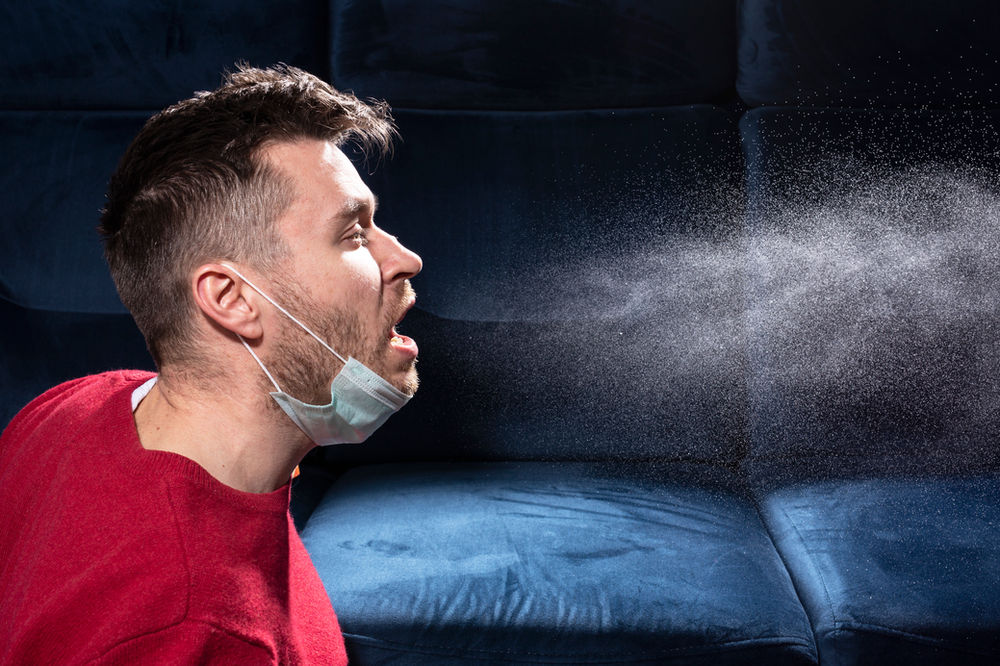In recent weeks we’ve learnt much more about how SARS-CoV-2 spreads and subsequently, how we should be combating it. There’s a much lower risk of surface to human transmission and much higher risk of human to human transmission then was previously thought. This is in part, due to the fact that viral particles travel and last in the air much longer and more numerously than older estimates had put forward.In fact, the new understanding we have of the virus means that we can now mathematically calculate the risk of infection in a given circumstance. By measuring the amount of viral particles needed for an infection against the amount produced by various human activities, we are able to more accurately inform people which activities carry the most risk in the current pandemic situation. Here’s how it works.To become infected you need a dose of ~1000 viral particles (vp) in a relatively short space of time.Human activities that produce viral particles and their rates are as follows:
- Breathing: ~20 vp/min
- Speaking ~200 vp/min
- A cough: ~200,000,000 vp
- A sneeze: ~200,000,000 vp
Viral particles, especially from a cough or a sneeze can last in the air for hours if there isn’t adequate ventilation. This means that a single cough from an infected person hypothetically carries enough viral particles to infect 200,000 people.From this information we can create a formula for infection.A SARS-CoV-2 Infection = Exposure to Virus x TimeAnd from this formula we can assert the risk of infection from a variety of different scenarios. The US Centre for Disease Control has produced this list of common scenarios and their respective risks of infection.
- In the vicinity of someone while social distancing: Low Risk (if less than 45 min)
- Talking to someone face-to-face: Low Risk (if using a mask and less than 4 min)
- Jogging/walking/cycling past someone and vice versa: Low Risk
- Well ventilated spaces: Low Risk (if for a limited time)
- Grocery Shopping: Medium Risk (low risk if being hygienic and limiting time)
- Indoor spaces: High Risk
- Public bathrooms and common areas: High Risk (from surface to human transmission)
- Restaurants: High Risk (medium risk if sitting outdoors while social distancing and avoiding touching unnecessary surfaces)
- Workplaces/Schools: Very High Risk (including surface to human transmission, even with social distancing)
- Parties/Weddings: Very High Risk
- Business Networking/Conferences: Very High Risk
- Arenas/Concerts/Cinemas: Very High Risk
A lot of the restrictions currently in place do reflect our current understanding of the virus and its transmission, but it’s not enough to just know what the restrictions are. You also need to know why they are in place, so that you can make sure you’re taking the necessary precautions to protect yourself and your loved ones from the disease.Work from home. Wash your hands. Practice social distancing and wear a mask if you can’t.The virus is not gone and the pandemic is not over. Everyone needs to do their part to end it.
Stay safe.–Source: https://www.washingtonpost.com/health/2020/05/21/virus-does-not-spread-easily-contaminated-surfaces-or-animals-revised-cdc-website-states/–This article is from Keystone Medical Media, a sub-entity of Keystone Content.



